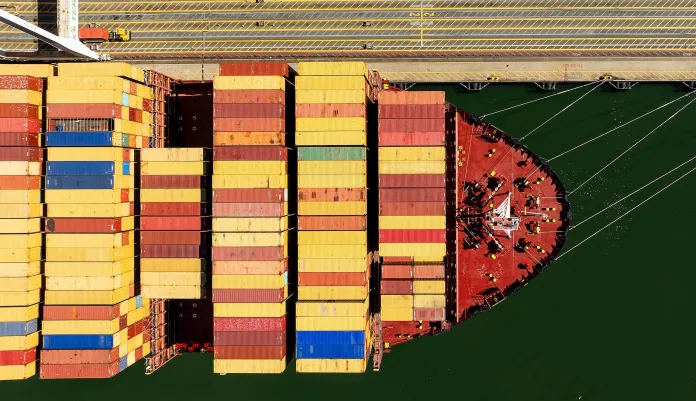Inside China’s Tariff-Dodging Scheme That Kills Its Competition
In 2016, the U.S.-China trade war led to significant concessions from China due to imposed tariffs. Though, by 2025, when the U.S. escalated tariffs to 145%, China remained unfazed, largely thanks to a decentralized export system established over the last decade. This system consists of over a million chinese cross-border e-commerce companies that ship directly to U.S.consumers through platforms like Amazon, Temu, and Shein, effectively avoiding conventional retail channels, taxes, and tariffs.
Chinese sellers have developed sophisticated strategies to bypass U.S. customs regulations, such as undervaluing goods on customs declarations and using Non-Resident Importer (NRI) structures to minimize duties. this allows them to keep prices low while avoiding taxes, granting them a competitive advantage over American businesses.
The article illustrates this with a comparison of two importers: a U.S. importer facing high tariffs on fairly declared goods, and a Chinese seller who falsely declares the same goods at much lower values. Such practices lead to significant losses for U.S. businesses, reduced employment in domestic sectors, and decreased tax revenue for governments.
Despite the introduction of reforms, like the end of the $800 de minimis exemption in 2025, major Chinese exporters adapted quickly.The author argues that to effectively address these issues and protect American companies, the U.S. must close existing loopholes by ensuring better regulatory measures and enforcing stricter compliance with customs declarations.
the article warns that without these necessary reforms, tariffs will continue to disadvantage legitimate U.S. businesses while benefiting dishonest foreign competition.
In 2016, the U.S.-China trade war forced Beijing to negotiate. Tariffs crippled Chinese factories, major U.S. retailers like Walmart and Costco halted orders, and container shipments stalled. China conceded. But in 2025, when the U.S. imposed a 145 percent tariff expecting similar results, Beijing didn’t flinch. There was no panic, no economic distress, no concessions. Why? Because China had a secret card this time.
Over the past decade, China has built a decentralized export machine: more than 1 million cross-border e-commerce companies shipping directly to U.S. consumers via platforms like Amazon, Temu, and Shein. This army bypasses traditional retail channels, pays no income taxes, evades tariffs, and undercuts American businesses. Here’s how they do it — and why tariffs alone can’t stop them.
How They Game the System
Unlike in 2016, Chinese sellers no longer rely on U.S. retailers’ purchase orders. They ship container loads of goods directly to consumers, systematically undervaluing them on customs declarations.
Chinese e-commerce companies exploit U.S. customs through sophisticated tactics centered on non-resident importer (NRI) structures and delivered duty paid (DDP) clearance. These methods, often facilitated by logistics firms and customs brokers, shield sellers’ identities and minimize duties.
Here’s how it works: Brokers register NRI entities and post bonds for Chinese sellers, clearing goods and delivering them to Amazon fulfillment warehouses. They declare low container values to avoid scrutiny and sometimes misclassify goods as other items to secure a lower tariff rate. Many brokers are Amazon-affiliated (SPN, Send, Ship Track). Platforms like AMZ123.com list hundreds of such providers. Large sellers register multiple NRIs, splitting shipments among them. If one NRI is flagged, only that bond is lost — a minor business expense.
These tactics let Chinese sellers sidestep tariffs, keep prices low, and dominate visibility. As tariffs rise, so does their competitive edge.
A Tale of Two Importers
Consider what this looks like practically.
If Company A, a U.S. importer, buys a $10 product at a 10 percent tariff, it would pay a $1 duty, for a total cost of $11. At a 145 percent tariff, it would pay a $14.50 duty, for a total cost of $24.50.
If Company B, a Chinese seller, falsely declares the same $10 item as $1, at a 10 percent tariff, it would pay $0.10, for a total of $10.10. At a 145 percent tariff, it would pay $1.45, for a total of $11.45.
Company B also avoids U.S. corporate taxes by funneling profits offshore. Company A pays full tax. This isn’t just an advantage, it’s economic warfare.
This system devastates U.S. businesses. Retailers lose pricing power. Jobs in fulfillment, marketing, and customer service move offshore. Federal and state governments lose significant tax and tariff revenue. Small and mid-sized brands are crushed.
In May 2025, the Trump administration ended the $800 de minimis exemption. It disrupted small-parcel shippers, but major exporters weren’t affected. They had already switched to container loads. Their real edge isn’t de minimis; it’s systemic undervaluation and offshore profit laundering.
Proof in Plain Sight
If Chinese sellers paid 145 percent tariffs, prices would have doubled. They didn’t. Price-tracking sites like camelcamelcamel.com and keepa.com show that Chinese-made goods, such as textiles, gadgets, and pet products, still sell for $10–$20. They’re relatively unchanged.
And despite tariffs, China’s outbound container volume dropped only 35 percent in 2025, not the 80 percent collapse many expected. That’s because e-commerce exporters kept shipping and kept cheating.
How to Shut Down the Trojan Horse
To fix these problems, the United States must focus its reforms on closing these operational loopholes.
First, it should require all sellers on U.S. platforms to have a U.S.-registered entity, employer identification number, address, and bank account. Platforms must enforce real-name KYC, or “know your customer.”
Second, customs declarations should use platforms’ SKU-level sales data. Declared value must be at least 30–35 percent of the normal retail price. Deviations over 70 percent should trigger AI-driven Customs and Border Protection audits.
Third, the United States should ban NRI and DDP structures that obscure seller identity and require sellers to be the true importer of record.
Without these changes, tariffs will keep punishing honest American companies while rewarding tax dodgers abroad.
This isn’t globalization. It’s industrialized loopholes. Until the United States shuts them down, China’s Trojan horse will keep rolling through America’s gates.
For more in-depth evidence, detailed case studies, and future podcast and video content, visit digitaltrojanhorse.com.
Tim Odell is a seasoned merchant with 35 years of experience in home textiles, including retail, domestic manufacturing, and imports. For the past 19 years, he has worked at JLA Home, one of the largest home textile vendors in the U.S.
" Conservative News Daily does not always share or support the views and opinions expressed here; they are just those of the writer."




